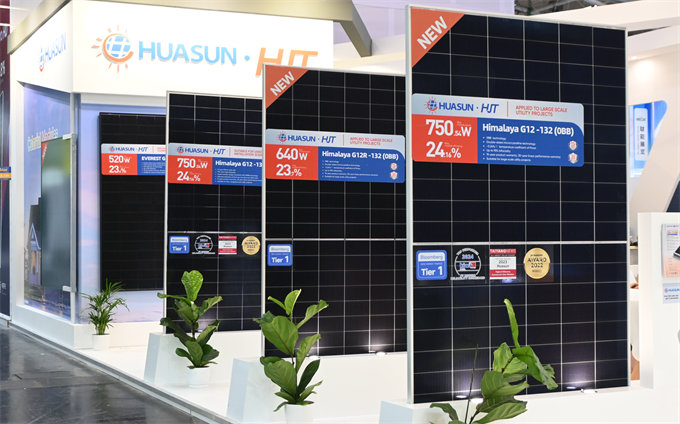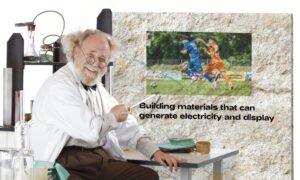- Huasun displayed its latest 132 cell based G12 and G12R version HJT module with 0BB metallization technology
- Both G12 and G12R HJT modules use Huasun’s HJT 3.0 version cell technology
- Alongside mainstream high capacity HJT module, the company also introduced its innovative ultra-high bifaciality vertical module and coloured modules
- The manufacturer also showcased its HJT-perovskite sample tandem cell at the show
A leading name in the heterojunction (HJT) space, Chinese solar PV manufacturer Huasun showcased its recent technological progress in cell and module level at the Intersolar Europe 2024. Its display comprised busbarless (0BB) HJT module, ultra-high bifaciality module, aesthetical colourful module, and HJT-perovskite-tandem cell. Eyeing the promising European market, the company displayed its innovations from June 19 to 21 at Munich exhibition hall. Majorly driven by the industry friendly incentivizing policies, Germany has become the foremost regional market to look into for Huasun. As a pioneer in implementing G12R rectangular size cell module, the company has introduced 132 cells version 640W bifacial module under Himalaya series with more than 23% efficiency .
Alongside the new rectangular wafer cell, Huasun displayed its G12 132 cell version 750W Himalaya series modules. The company claimed to have employed its new HJT 3.0 version cell technology with double sided microcrystalline polysilicon layer topped on amorphous silicon (a-Si) layer or 2 x µC-Si, and included light-conversion-film (LCF) encapsulant into both G12 and G12R versions . The 3.0 version boosts cell efficiency due to the implementation of 2 x µC-Si layer, and yield additional power coupled with higher reliability against UV degradation thanks to the LCF. Additionally, the successful incorporation of 0BB metallization on both 132 version modules enhance module bifaciality by eliminating busbars while reducing power loss in high operating temperature by displaying low temperature coefficient of – 0.24%/℃, according to the company. In 0BB technology, the soldering ribbon is glued on top of the cell instead of soldering on specific points, leading to thinner finger, reduced silver consumption, improved reliability, and scope for more thinner wafer.
In recent times, Europe has experienced high demand for vertical bifacial PV module for application in agrivoltaics, PV guardrail, highway guardrail, and building-integrated photovoltaics (BIPV). Huasun’s introduction of 97% ultra-high bifaciality Himalaya series model at the event is the response to Europe’s demand for vertical installation, said the manufacturer. Its “double peaks” characteristics ensure additional power yield during peak hours and optimized power generation in off-peak hours. The manufacturer says its innovative vertical design not only enables efficient space utilization, but also mitigates the risk of dust and snow accumulation. In addition, the company also showcased its colourful aesthetic HJT modules at the event.
On future technological innovation, Huasun displayed its sample HJT-perovskite-tandem cell to the interested visitors and clients.



